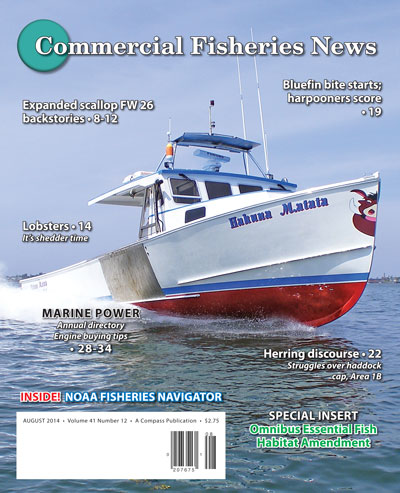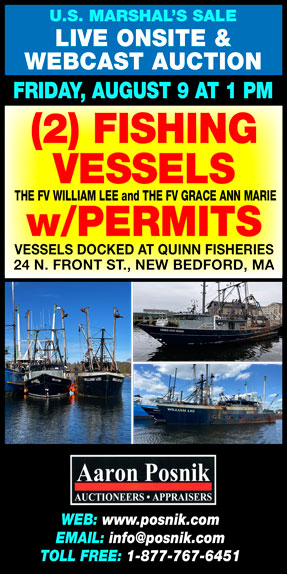Just when you thought things couldn’t get more complicated, they have. The New England Fishery Management Council is gearing up for public hearings on proposed Omnibus Essential Fish Habitat (EFH) Amendment 2. Once finalized, this massive amendment will apply to all fisheries under the council’s jurisdiction and potentially will change the very landscape of fishing grounds throughout the region.
 By law, the council is required to review and update its habitat management measures from time to time. This go-around began some 10 years ago and was split into two phases. During Phase I, the council’s Habitat Oversight Committee worked to identify EFH, the areas of the ocean most important to fish and shellfish throughout the various stages of their natural lives. That effort was completed in 2007. Since then, the committee has been immersed in Phase II, laboring to figure out how best to go about protecting these important areas to ensure that the marine resources this industry depends on have the best possible chance to thrive.
By law, the council is required to review and update its habitat management measures from time to time. This go-around began some 10 years ago and was split into two phases. During Phase I, the council’s Habitat Oversight Committee worked to identify EFH, the areas of the ocean most important to fish and shellfish throughout the various stages of their natural lives. That effort was completed in 2007. Since then, the committee has been immersed in Phase II, laboring to figure out how best to go about protecting these important areas to ensure that the marine resources this industry depends on have the best possible chance to thrive.
During a special meeting back in February, the council signed off on a range of proposals to retain, modify, and/or eliminate existing closures and potentially establish new ones. Public hearings on the draft amendment will be held later this summer and early fall. So, it’s time to get familiar with the many options and decide which make the most sense – both for fish and fishermen.
Recognizing the complexity of this amendment, the New England council has developed a summary of the management alternatives to kick-start a much-needed public outreach and education effort. That summary is included as a special insert in this edition of CFN. The council also teamed up with the Gulf of Maine Research Institute to conduct informational meetings in July.
Basically, the public will be asked to weigh in on the siting of three kinds of designated areas: habitat management areas, spawning management areas, and dedicated habitat research areas.
Habitat management areas could involve area closures and gear restrictions and/or gear modifications to protect important habitat. Spawning management areas could involve seasonal closures, though possibly with exemptions, to protect fish when they congregate to spawn and/or are in vulnerable juvenile life stages. And, habitat research areas are places where most types of fishing might be prohibited, at least for a time, in order to leave them undisturbed for scientific study.
The draft amendment splits New England into five subregions: Eastern Gulf of Maine, Central Gulf of Maine, Western Gulf of Maine, Georges Bank, and the Great South Channel/Southern New England. It then offers alternatives by category – habitat, spawning, and research – for each subregion. The alternatives are extremely varied, ranging from “no action” to modifying or eliminating long-time existing closure areas to creating brand new restricted areas and more. In some alternatives, the different kinds of areas overlap each other.
There is a lot at stake. Recreational fishermen, environmentalists, and even commercial fishermen in different fisheries are bound to have sharply divergent views on which alternatives best suit their interests. That’s why it is important to prepare for the upcoming hearings.
Read the special council insert and review our extensive coverage of the draft amendment in the May 2014 CFN, which is available on our website. Arm yourself with information, speak up during the hearings, and submit written comments. That’s the best way to have a say in how the coming reconfiguration of New England’s fishing grounds unfolds. /cfn/

Get the rest of this issue and much, much more in the August issue of Commercial Fisheries News.
Read online immediately and download for future reference.








 Updating...
Updating...